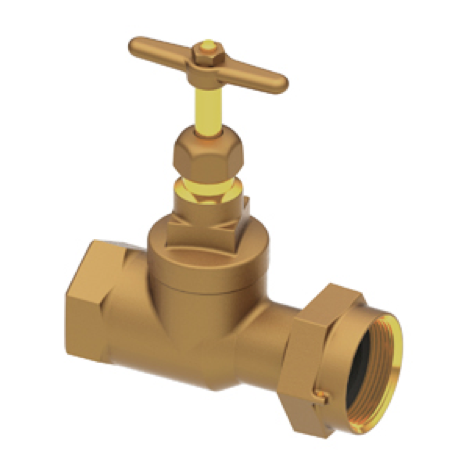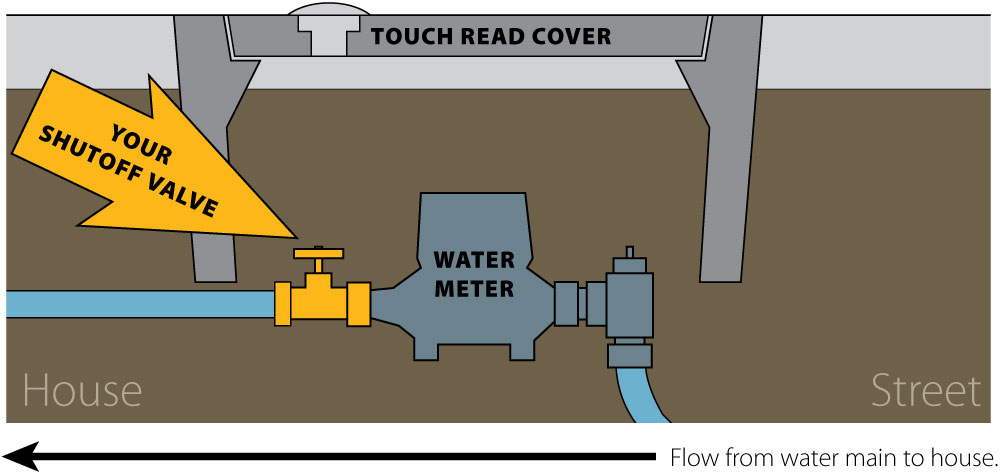Each year the Public Works Department receives customer calls for frozen pipes and meters. These can damage your water system and home. You can help to ensure your pipes do not freeze by taking some simple precautions:
Preventing Frozen Pipes
Before the onset of cold weather:
- Drain water from swimming pool and sprinkler supply lines following manufacturer’s directions. Do not put antifreeze in water lines; it is poison!
- Remove, drain, and store outdoor hoses. Close indoor valves to outdoor hose bibs. Open outside hose bibs to allow water to drain.
- Check around the home for areas where water supply lines are in unheated areas; basement, crawl space, attic, garage, and under kitchen and bathroom cabinets.
- Consider installing products made to insulate exposed water pipes such as a pipe sleeve or UL-listed heat tape, heat cable, or similar materials.
During Cold Weather
- Keep garage doors closed if water supply lines are in the garage.
- Open kitchen and bathroom cabinet doors to allow warmer air to circulate around plumbing.
- When the weather is very cold, let cold water drip from faucets served by exposed pipes. Running water through the pipe - even at a trickle - helps prevent pipes from freezing.
- If you will be away from home during cold weather, leave the heat on in your home, set no lower than 55° F.
Thawing Frozen Pipes
- If you turn on a faucet and only a trickle comes out, suspect a frozen pipe. Pipes against exterior walls or where lines enter your home through the foundation are the most vulnerable.
- Keep the faucet open. As you treat the frozen pipe and the frozen area begins to melt, water will begin to flow. Running water through the pipe will help melt ice in the pipe.
- Apply heat to the frozen section of pipe with an electric heating pad wrapped around the pipe, an electric hair dryer, a portable space heater (kept away from flammable materials), or by wrapping pipes with towels soaked in hot water. Do not use a blowtorch, kerosene or propane heater, charcoal stove, or other open flame device.
- Apply heat until full water pressure returns. If you are unable to locate the frozen area, if the area is not accessible, or if you cannot thaw the pipe, call a licensed plumber.
Future Protection
- Consider relocating exposed pipes to provide increased protection from freezing.
- Pipes can be relocated by a professional.
- Add insulation to attics, basements and crawl spaces. Insulation will maintain higher temperatures in these areas.
Keep water pipes safe from freezing
With cold weather on the way, it’s time to think about keeping water pipes in your houses safe from freezing. Typical methods include insulation and letting faucets drip. Another solution, especially if you plan to be away from during the winter holidays, is shutting off the water supply at the meter. Here’s how to do that.
 Most water service lines have two valves: one on the City side of the meter, which takes a special wrench to turn, and the other on the customer side of the meter which turns off like a faucet. See picture below for the valves the City of Albany been using for the past 25 years.
Most water service lines have two valves: one on the City side of the meter, which takes a special wrench to turn, and the other on the customer side of the meter which turns off like a faucet. See picture below for the valves the City of Albany been using for the past 25 years.
The black arrow indicates flow of water from the main to the home. The yellow arrow points to the customer valve, located on the back side of the meter, the side closest to your house. In most cases, if you look at the meter in the sidewalk, the valve closest to the home is the customer valve and is the valve that turns like a faucet and requires no special wrench. To turn the water off, you turn the valve clockwise, then turn counterclockwise to turn water back on.





